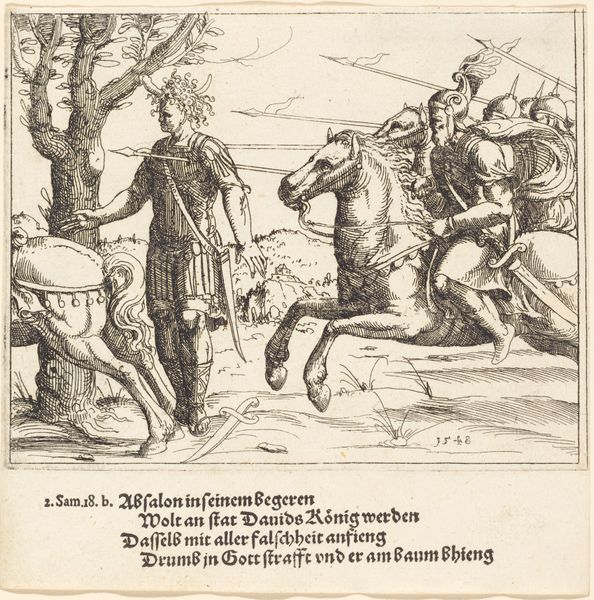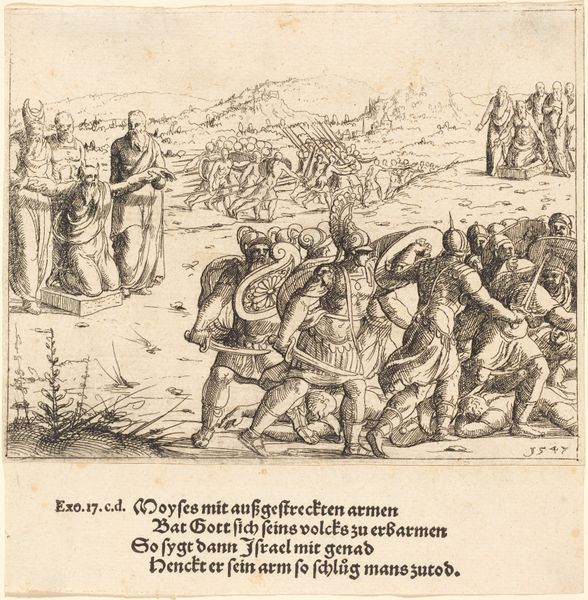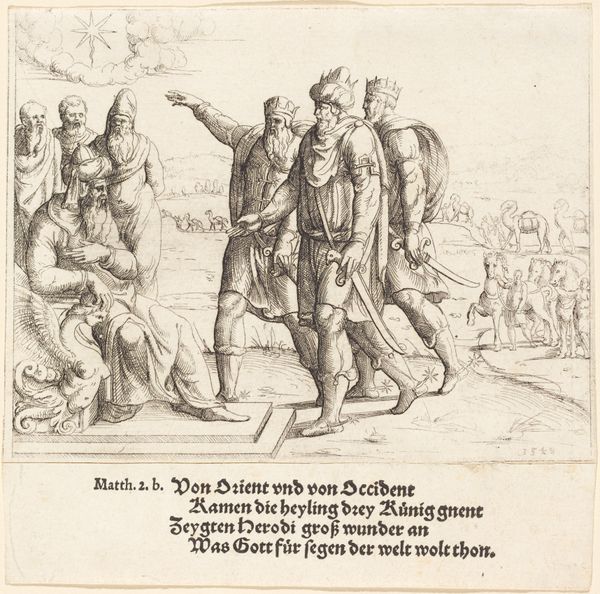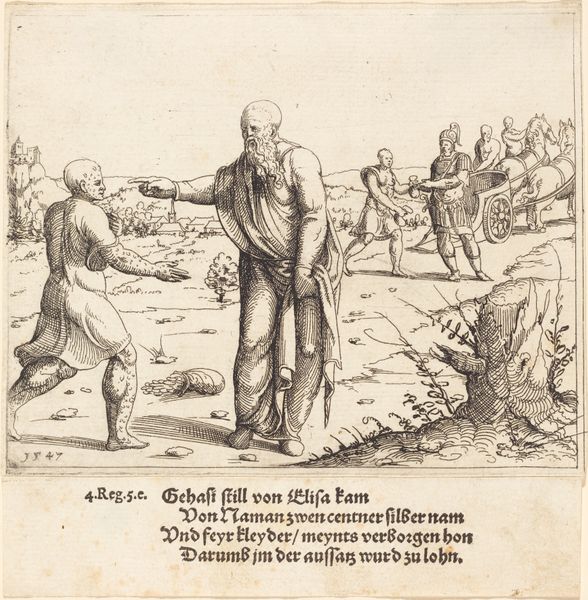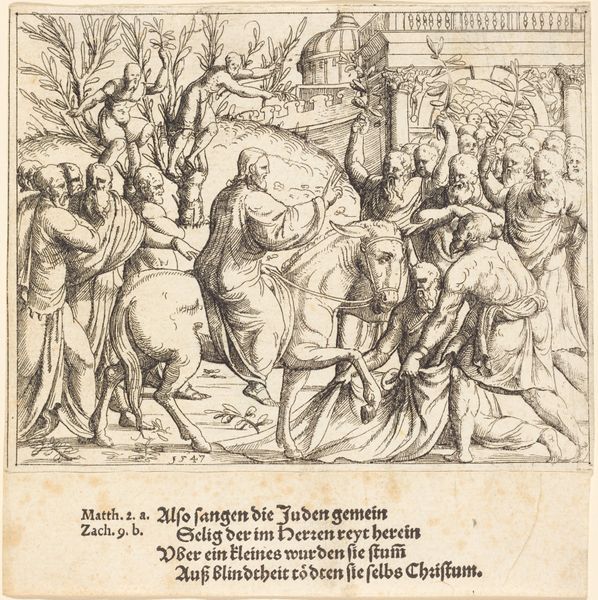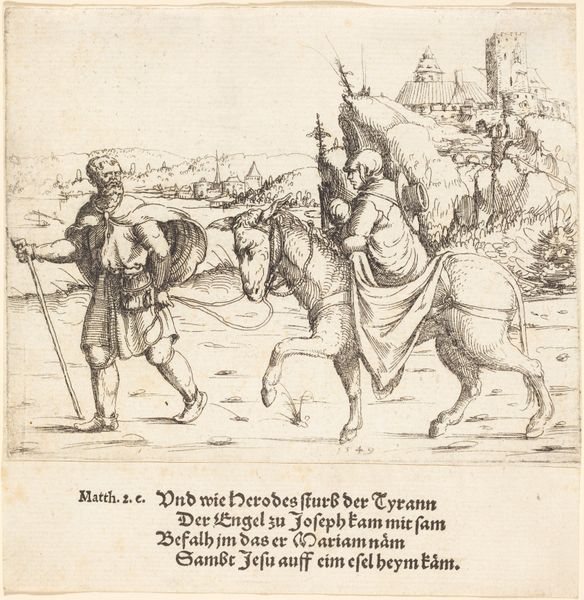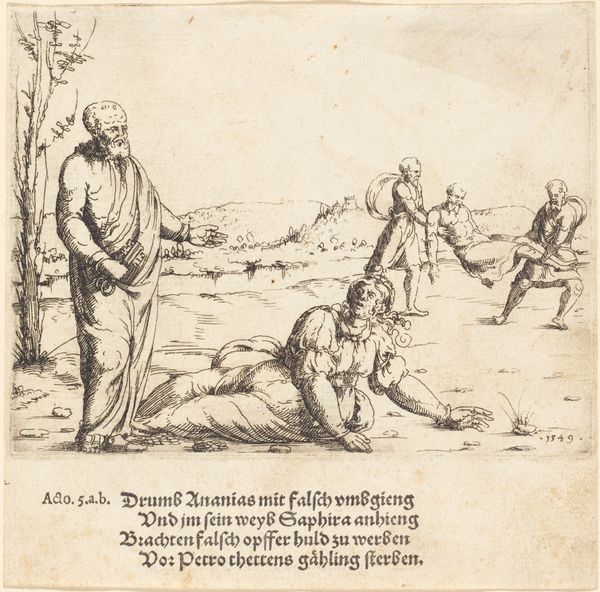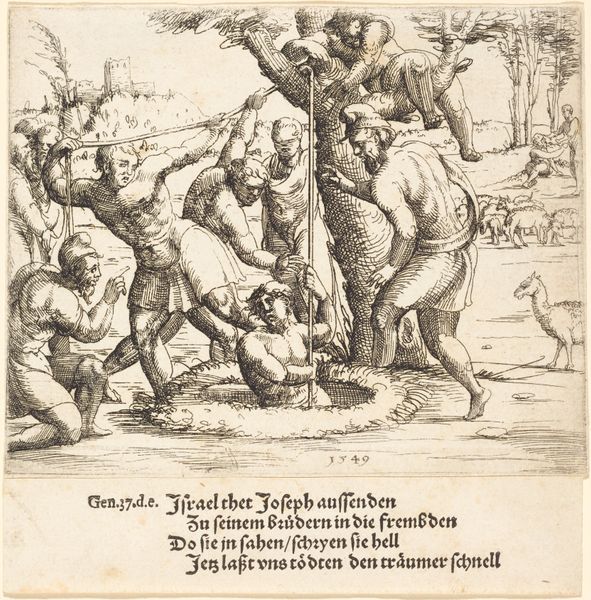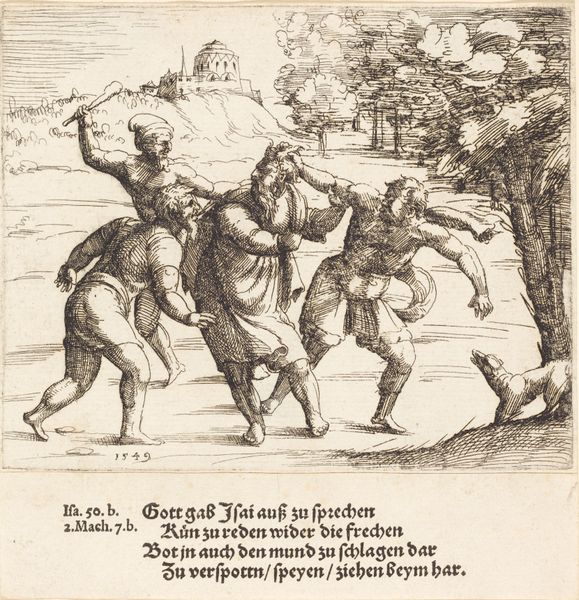
print, engraving
# print
#
figuration
#
line
#
history-painting
#
northern-renaissance
#
engraving
Copyright: National Gallery of Art: CC0 1.0
Augustin Hirschvogel created this print of Joab betraying Abner, using etching, sometime in the mid-16th century. It’s all about the line here: notice how the artist has used it to create volume and texture, conjuring forms from thin air. As a print, this image exists in many identical copies – a relatively inexpensive artwork intended for broad circulation. That fact gives it social significance. This wasn't a unique painting made for a wealthy patron. Instead, it was produced in multiples, expanding access to art beyond the elite. The fine, detailed linework speaks to the artist’s hand-skill, and the amount of labor involved in the etching process, using acid to bite lines into a metal plate. This print bears witness to the changing modes of production, as traditional craft practices meet new possibilities of distribution. It’s a potent reminder that art doesn't exist in a vacuum; its meaning is deeply intertwined with the social conditions of its making.
Comments
No comments
Be the first to comment and join the conversation on the ultimate creative platform.

